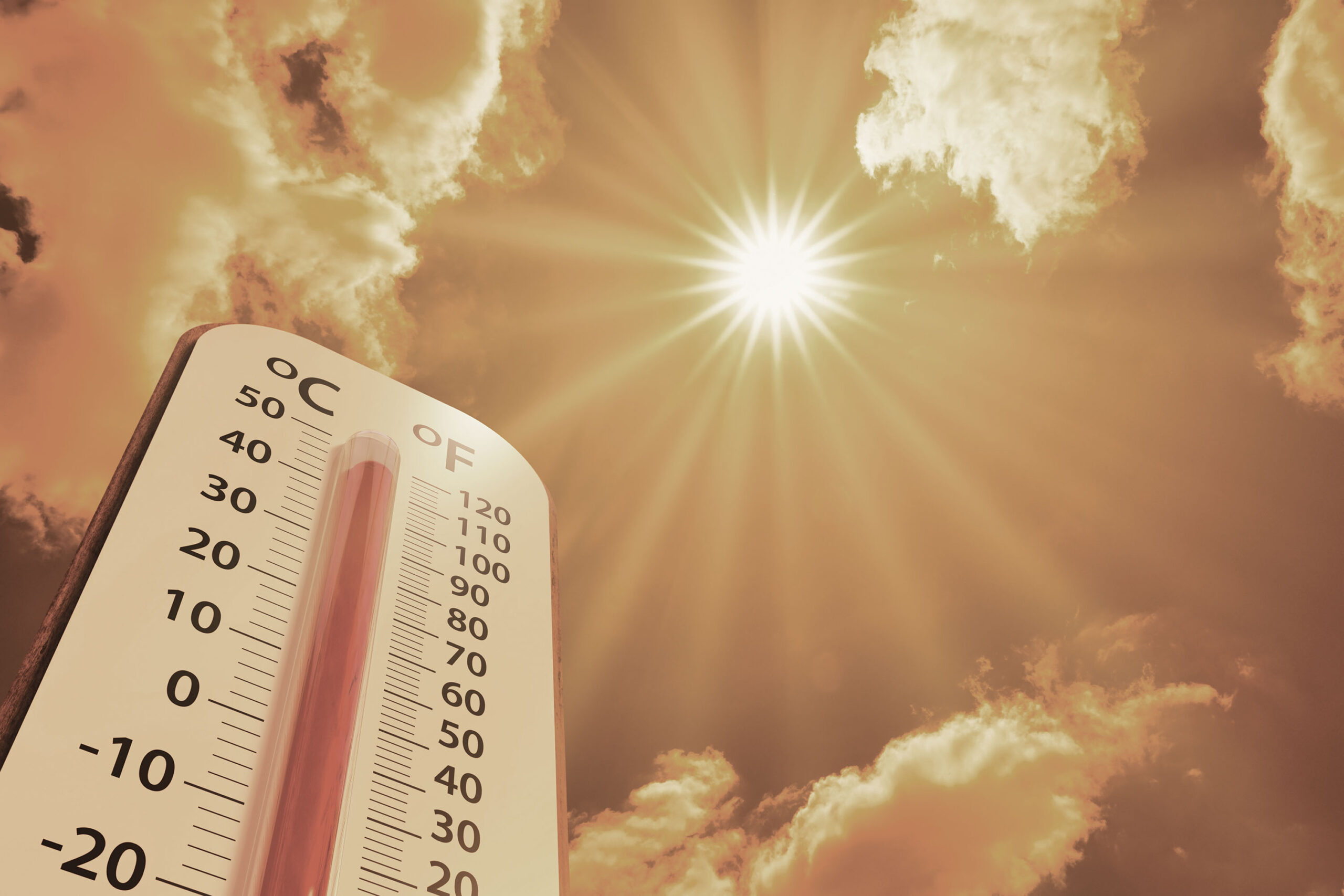WORLD –– Researchers conducted an experiment to investigate the upper limit of the thermoneutral zone of the human body, working with Prof. Lewis Halsey, University of Roehampton. Researchers investigated when the body starts exerting more energy to keep itself cool at high temperatures. They found that this upper-temperature limit lies between 104F and 122F when the human body stops functioning optimally. Further studies are needed to understand how this happens and offer insights as heat waves and unusually warm temperatures continue to impact regions across the globe.
The human body may lose the ability to rid of excessive heat and stop functioning optimally when outside temperatures reach beyond 40 degrees Celsius (104 Fahrenheit), according to new research from the University of Roehampton in England. The thermoneutral zone is a range of temperatures in which the body doesn’t have to increase its metabolic rate or exert more energy to maintain its ideal core temperature of 98.6 degrees Fahrenheit.
Studies show that the zone’s lower limit is 82.4 F. Below this, the body expends more energy to maintain its ideal temperature. One of the keys ways it does this is by shivering — when key muscle groups involuntarily contract to produce heat. At higher temperatures, the body uses other mechanisms to cool down, such as sweating and vasodilation of blood vessels at the skin surface to increase heat loss.
However, while the thermoneutral zone’s lower range has been established, its upper limit is still uncertain. One study suggests that the upper limit may stand at around 89.6 F as this is when humans start to sweat. Another study, however, noted that the metabolic rate starts to increase at 104 F. Further research into the upper limit of the thermoneutral zone could inform policies on working conditions, sports, medication, and international travel.
As a follow-up study of a 2021 investigation, researchers at the University of Roehampton in England conducted a second set of experiments to investigate the upper limit of the thermoneutral zone. They found that the thermoneutral zone’s upper limit likely lies between 104 F and 122 F.
“The findings appear to shed more precise light upon the body’s responses to sustained heat and humidity, and upon both the nature and mechanisms of enhanced metabolic rate that also arise in response to such conditions,” said Dr. J. Wes Ulm, a bioinformatic scientific resource analyst, and biomedical data specialist at the National Institutes of Health, not involved in the study.
Researchers recently presented the new findings at the annual conference of Society for Experimental Biology in Edinburgh, Scotland.
How temperature and humidity affect the human body
For the study, the researchers recruited 13 healthy volunteers aged between 23 and 58 years old. Seven of the participants were female. Each participant was exposed to five temperature conditions for an hour while resting. The conditions included:
82.4 F and 50% relative air humidity (RAH)
104 F and 25% RAH
104 F and 50% RAH
122 F and 25% RAH
122 F and 50% RAH
Throughout each condition and at baseline, the researchers recorded several metrics, including:
core & skin temperatures
blood pressure
sweating rate
heart rate
breathing rate
volume of air inhaled & exhaled per minute
movement levels
Ultimately, the researchers found that participants’ metabolic rate increased by 35% when exposed to 104 F and 25% RAH, and by 48% at 104 F and 50% RAH. Although the 122 F and 25% RAH condition did not increase metabolic rate compared to 104 F and 25% RAH, metabolic rate was 56% higher than baseline in the 122 F and 50% RAH condition.
The increased metabolic rate at the 104 F and 25% RAH condition was not accompanied by an increase in core temperature. However, participants in the 122 F and 50% RAH condition experienced a rise in core temperature of 1.8 Farenheit. The researchers noted that these findings suggest that the body is able to dissipate heat at 104 F, but not at 122 F.
“The findings do seem likely to vary by […] humidity,” said Dr. Mark Guido, an endocrinologist with Novant Health Forsyth Endocrine Consultants in Winston Salem, North Carolina, not involved in the study. “In the study there was some evidence that resting metabolic rate was higher at higher humidities, even at the same temperature. It seems like humidity also plays a large role in the metabolic rate,” he added.
The researchers further noted that participants in the 122 F and 50% RAH condition sweated 74% more and experienced a 64% increase in heart rate compared to baseline. They further noted that compared to baseline, participants in the 122 F and 50% RAH group experienced increased myocardial workload, meaning their hearts required more oxygen to maintain optimal function. Moreover, their breathing rate also increased by 23%, and the amount of air they could inhale and exhale per minute increased by 78%.
The researchers noted that drinking water in each of the conditions did not cool the body.
How does climate affect metabolic rate and health?
Dr. John P. Higgins, Sports Cardiologist at McGovern Medical School at The University of Texas Health Science Center at Houston (UTHealth), who was not involved in the study, postulated how living in different climates may affect metabolic rate and the thermoneutral zone.
“People living in warm climates tend to acclimatize and not increase their body temperature and in turn their metabolic rate as much. Likewise, people living in cool-freezing temperatures may get more of a response to heat exposure as they are not acclimatized to the heat as much,” Dr. Higgins noted.
Dr. Ulm stated: “The body, in general, will find ways to activate the various feedback loops needed to achieve homeostasis i.e., the painstaking regulation of physiological processes that allow for the complex biochemistry of organs and tissues to be carried out efficiently and properly.”
“Body temperature and metabolic rate are integral components of this delicate dance, and for those who are resident in hotter climates year-round, it may be more likely for such countervailing feedback loops to be active and functioning. It’s similar to the way permanent residents of high-altitude regions will acclimate with compensatory mechanisms, for example, in their red blood cell physiology and other aspects of oxygen-carrying capacity, both acutely – as through iron turnover rates – and chronically,” Dr, Ulm said.
What are the study limitations and takeaways?
Dr. Ulm spoke about the study’s limitations, “As always with such studies, there is the question of how representative the cohort sample of subjects is of both the general and specific populations being surveyed, in regard to the physiological characteristics and responses being measured.”
Dr. Guido noted: “It is hard to draw real world conclusions from a small laboratory study, but my main takeaway is that higher heat stress does seem to increase the resting metabolic rate by increasing how hard the body has to work to try to stay cool, particularly by causing a significant increase in the heart rate. If this holds true in real world conditions, it very well could lead to an uptick in cardiovascular disease by putting more strain on the heart,” he noted.
Dr. Higgins added: “Also, might it be beneficial for weight management to perform exercise in warmer temperatures indoors or outdoors to boost metabolic rate and thus burn more calories – further research needs to be done.”
– Annie Lennon
Tri-State Home, Garden & Lifestyle Show – Inspiration and Classic Cars Await
BULLHEAD CITY – Bullhead City’s premier event, the Tri-State Home, Garden & Lifestyle Show, is...
Read More






















